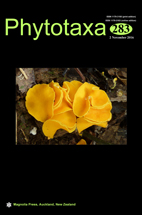Abstract
The seed morphology and anatomy of 12 species, representing five sections of Thalictrum, were investigated by scanning electron microscopy (SEM) and light microscopy (LM) to evaluate seed features for use in systematic analysis. Considerable differences were observed in seed surface micromorphology and seed coat characteristics both among and within sections of the genus. MANOVA, MDA, and cluster analysis were used to unravel the morphology of seeds among the species. The characteristic seed features for species were found to be seed shape, size, testa thickness, exotestal cells and seed surface sculpture. The results indicated that the most prevalent seed coat sculpture among the studied species was reticulate and some species were reticulate at the margin and rugose in the center. Seed surface was without ornamentation and epidermal cells were mostly polygonal, rectangular or irregularly shaped. The testa thickness varied from two to six cell layers, and the exotesta was well characterized and rectangular to tangentially elongate in most of the species, except T. simplex and T. uchiyamae in which exotesta was poorly represented. It has been observed that species with a non-reticulate or poorly developed reticulate surface sculpture have a less protected seed coat and vice versa. The results of this study indicated that seed morphological features do not, in general, provide strong support to the sectional division of the genus, but that species within sections shared some comparable seed features.

